No products in the cart.
July 1, 2024 12:57 am
July 1, 2024 12:57 am
According to Norse mythology, Odin, known as the Allfather, voluntarily hung himself from a tree, widely accepted to be Yggdrasil, the cosmic tree, for nine days and nights. This act of self-sacrifice, during which he also pierced himself with his spear and forbade any aid from the other gods, was his way of attaining the knowledge of the runes and unmatched wisdom
By examining this myth, we can gain insight into Odin’s unwavering quest for knowledge and its significance in ancient Norse faith. This analysis is ideal for anyone fascinated by Norse mythology, followers of pagan traditions, and individuals in search of enlightenment.
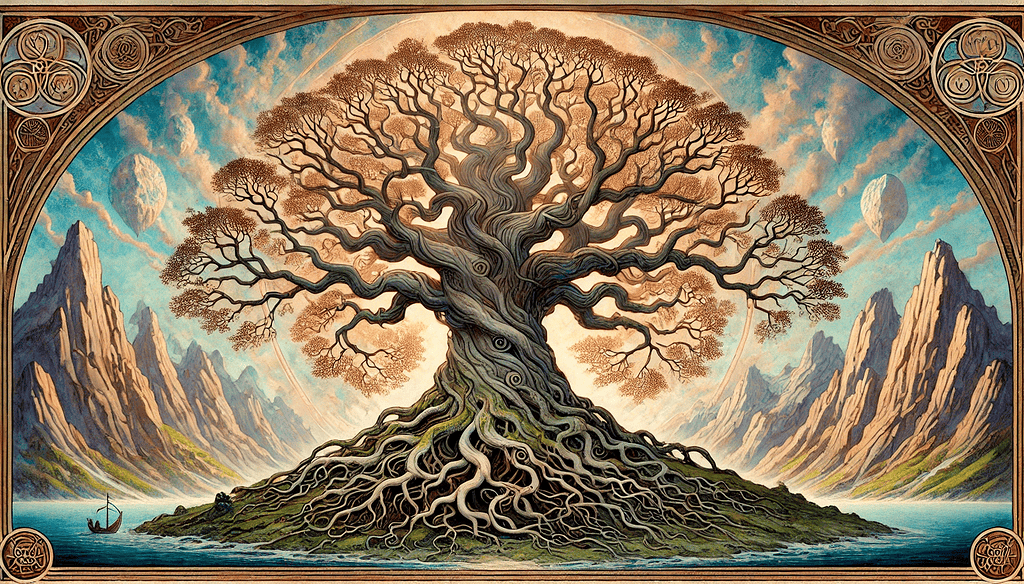
Yggdrasil, often referred to as the world tree or cosmic axis, stands at the center of Norse cosmology, binding together the nine realms. This immense ash tree stretches its roots and branches across the universe, connecting various worlds and serving as a bridge between different planes of existence
Each of these realms plays a vital role in Norse mythology, shaping the stories and destinies woven through Yggdrasil’s branches and roots:
Yggdrasil represents more than just a physical structure; it embodies life’s cyclical nature:
By understanding Yggdrasil’s importance in Norse mythology, you gain deeper insights into how ancient Norse people perceived their universe—a complex web where every action has repercussions across realms.
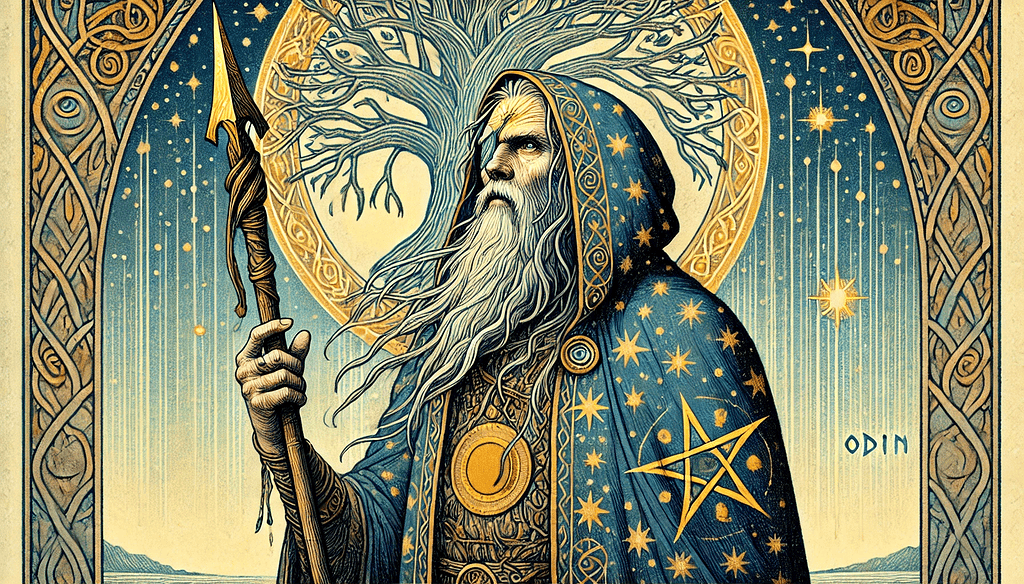
Odin, the chief of the Aesir gods, stands as a colossal figure in Norse mythology. Revered as the Allfather, he governs over Asgard and commands respect and awe among gods and mortals alike. Yet, what truly sets Odin apart is his insatiable thirst for knowledge.
As the supreme god, Odin holds dominion over war, poetry, wisdom and magic. His multifaceted nature embodies his relentless pursuit of wisdom.
He is often depicted as a one-eyed deity—an eye he willingly sacrificed at Mímir’s well to gain unparalleled knowledge. This act underscores his deep commitment to enlightenment.
Odin’s quest for wisdom is not confined to traditional means. His methods are diverse and often extreme:
Odin’s relentless pursuit of wisdom highlights his complex character. His actions reflect a deep understanding that true knowledge often demands personal sacrifice.
By seeking out forbidden or hidden knowledge, Odin embodies the eternal quest for enlightenment that resonates deeply within Norse mythology.
In this light, studying Odin’s sacrifices offers us a glimpse into the profound values upheld by ancient Norse culture—themes of endurance, sacrifice, and the ceaseless pursuit of knowledge.
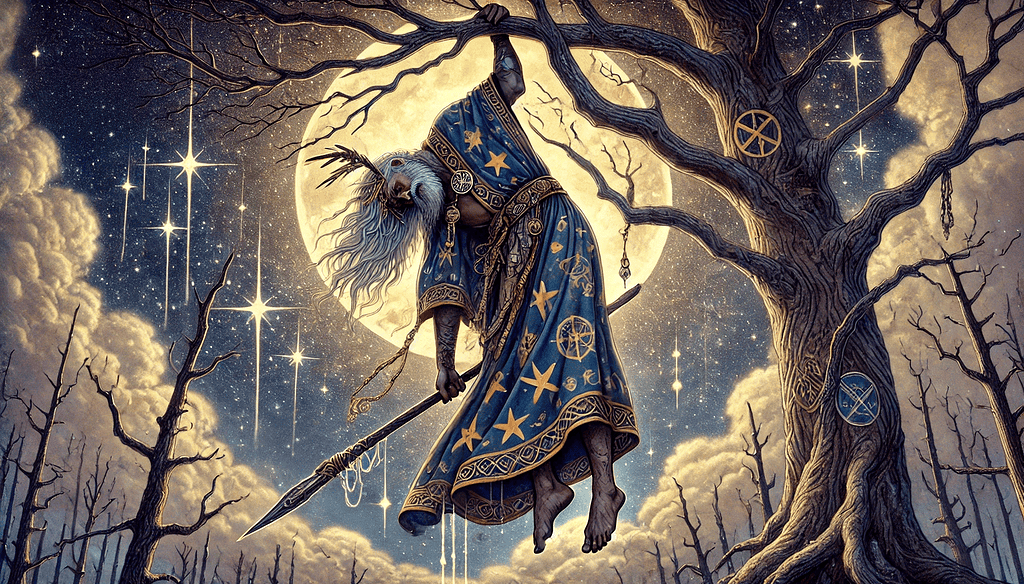
Odin hanging from Yggdrasil is one of the most mysterious and meaningful events in Norse mythology.
The Allfather chose to put himself through an incredibly painful experience, piercing himself with his spear, Gungnir, and hanging from the branches of Yggdrasil for nine days and nights. This wasn’t a sudden decision; it was a deliberate action driven by his unwavering desire for wisdom.
Odin’s suspension from Yggdrasil was more than just a physical act – it carried deep symbolic significance. He endured nine excruciating days and nights, without any food or water, bearing unimaginable agony.
The number nine holds great importance in Norse beliefs as it represents completion and interconnectedness among the nine realms linked by Yggdrasil. This period of intense suffering was crucial for Odin’s personal growth and enlightenment.
There are different ways to interpret Odin’s sacrifice, each offering valuable insights:
This story also sheds light on an important aspect of Norse culture – the value placed on personal sacrifice. By enduring immense torment, Odin demonstrated the belief that true wisdom and power come at a significant price.
His experience serves as a reminder that the journey towards enlightenment often involves confronting our deepest fears and enduring great hardships.
The significance of Odin’s sacrifice goes beyond his individual pursuit of knowledge. It emphasizes a recurring theme in Norse mythology that profound understanding is often attained through acts of courage and selflessness.
This philosophy resonates with those who strive for wisdom through perseverance and dedication, reflecting the principles that shaped Viking society.
Understanding this pivotal moment allows us to gain a deeper appreciation for not just Odin’s character, but also the cultural significance attached to acquiring knowledge in Norse mythology.
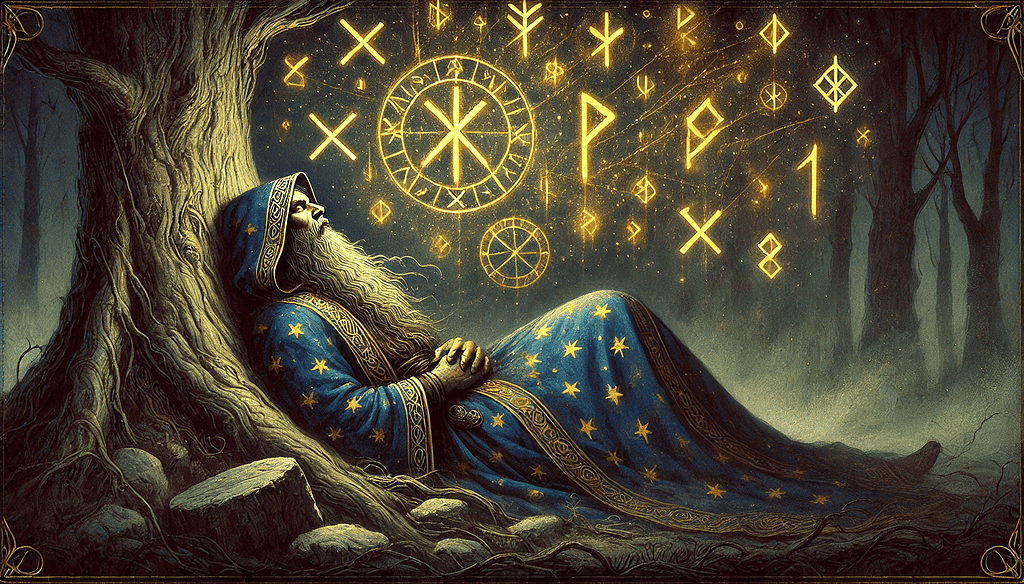
Odin’s wisdom, acquired through his self-imposed torment, marks a turning point in Norse mythology. Hanging from Yggdrasil for nine days and nights, he sought revelations that would transform him into a god of unparalleled knowledge.
This harrowing experience culminated in two significant discoveries: the runes and his connection to the well of Urd.
During Odin’s ordeal, he unlocked the mysteries of the runes. These ancient symbols, known as the Elder Futhark Runes, were not merely characters of an alphabet but powerful tools for divination and magic.
Odin’s sacrifice allowed him to comprehend these runes and harness their potential, bestowing upon him immense wisdom and power.
Odin’s ordeal exemplifies how personal sacrifice can lead to spiritual enlightenment. In Norse mythology, enduring great pain often results in profound gains:
Odin’s tale serves as a powerful reminder that seeking knowledge demands courage and perseverance. His willingness to endure such agony reflects his commitment to uncovering universal truths.
This relentless pursuit enriches our understanding of Norse mythology’s values and complexities.
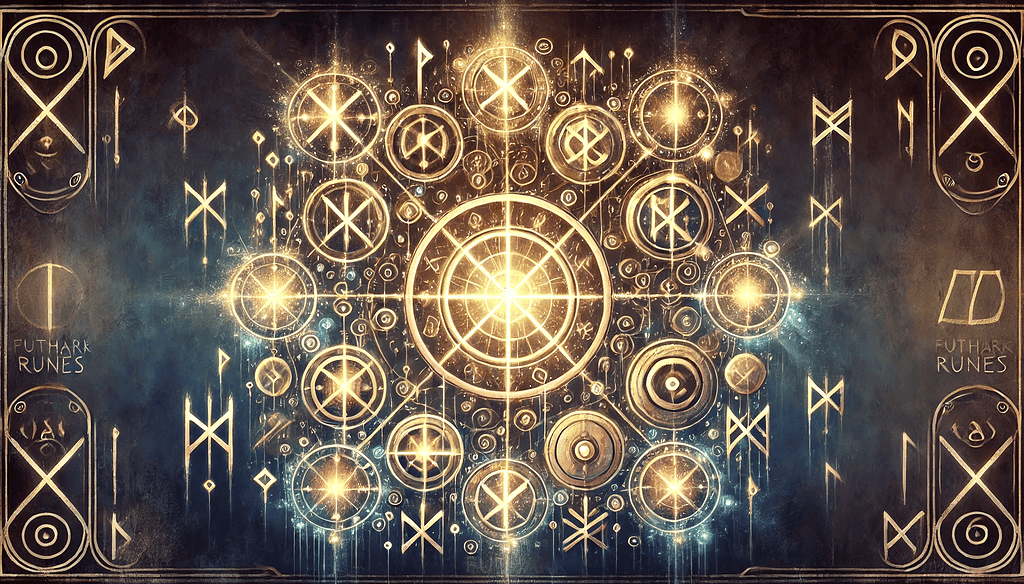
Odin’s nine-day ordeal hanging from Yggdrasil represents sacrifice and self-discovery. It shows his unwavering commitment to gaining wisdom and insight through a profound act of self-sacrifice.
By hanging himself from the world tree, Odin sought not only personal enlightenment but also a deeper understanding of the universe.
Odin’s torment serves as a powerful metaphor for sacrificing oneself in order to gain greater understanding. It resonates with those who are seeking wisdom, illustrating that enlightenment often requires enduring hardships and surpassing one’s own limits.
“We gain knowledge from suffering and strength from pain.”
This age-old wisdom from Odin’s ordeal encourages us to contemplate our own paths towards self-discovery and understanding.
Now, let’s smoothly transition to our next topic—how Odin’s acquired wisdom manifested—by exploring the significance of the Elder Futhark Runes and their profound influence on Norse culture and mysticism.
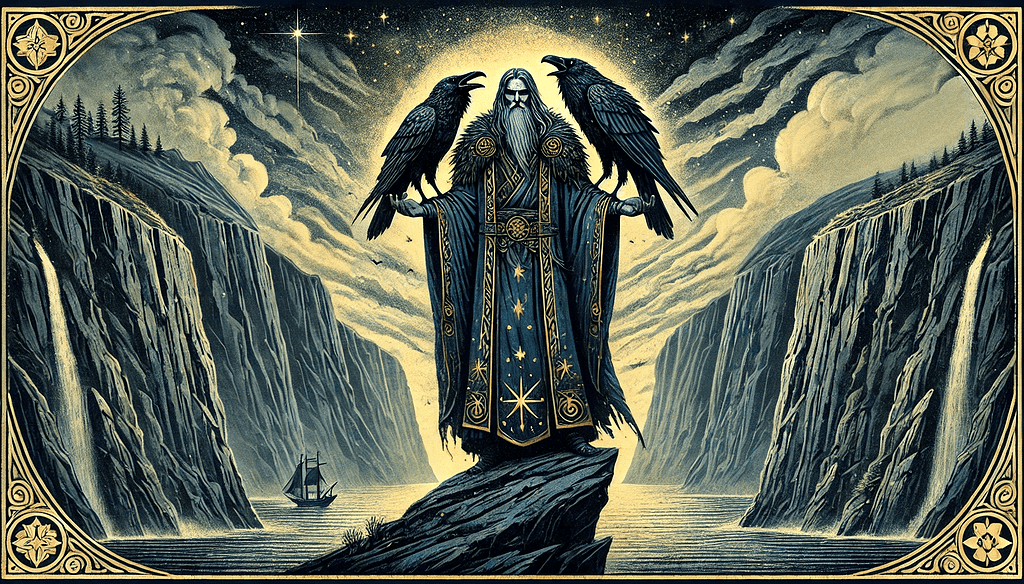
The Elder Futhark Runes are a fascinating part of Norse mythology and ancient Germanic culture. These runes, an ancient writing system, are more than just letters—they are symbols filled with deep meaning and magical power.
According to Norse mythology, Odin discovered the runes after hanging from a tree widely accepted to be Yggdrasil, the World Tree, for nine days and nights
During this intense ordeal, he looked into the depths of existence and caught a glimpse of these sacred symbols. This experience granted him incredible wisdom and strength, allowing him to understand and use the runes for various purposes.
“Then I began to thrive, and wisdom to get, I grew and well I was; Each word led me on to another word, each deed to another deed.” –Havamal
The runes serve as more than just a writing system; they hold mystical significance. Seers and shamans would use them for divination, casting lots in order to predict future events or gain insight into complex situations.
Odin’s sacrifice highlights a key theme in Norse mythology: the search for wisdom often demands personal hardship and sacrifice.
To grasp the depth of knowledge Odin gained, here is a quick overview of each rune in the Elder Futhark:
Go here for a comprehensive exploration on all 24 Elder Futhark Runes meanings
Odin’s willingness to endure extreme suffering for knowledge highlights a key value in Norse culture—the pursuit of wisdom at any cost. His sacrifice set an example for seeking deeper understanding through personal trials.
The runes he discovered became essential tools not only for communication but also for uncovering hidden truths and guiding spiritual journeys.
This deep connection between sacrifice and enlightenment can be seen in many aspects of Viking culture and spirituality. The story encourages you to reflect on your own life challenges as opportunities for growth and learning.
Understanding the Elder Futhark Runes not only deepens your understanding of Norse mythology but also provides practical insights into ancient traditions that continue to inspire modern seekers of wisdom.
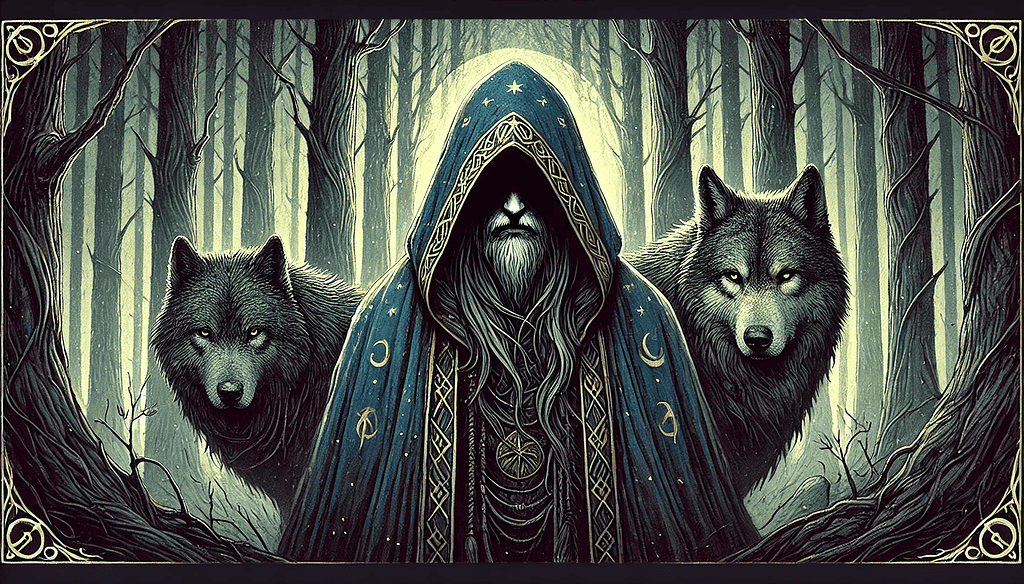
Odin’s sacrifice and wisdom represent the idea of giving up something important for the sake of gaining knowledge and strength. His experience of hanging from Yggdrasil, the World Tree, highlights the importance of staying determined and resilient when confronted with difficulties.
By delving into Odin’s self-sacrifice, we gain a deeper understanding of Norse mythology and the principles it upholds. This tale serves as a reminder that genuine wisdom frequently requires significant sacrifices on an individual level.